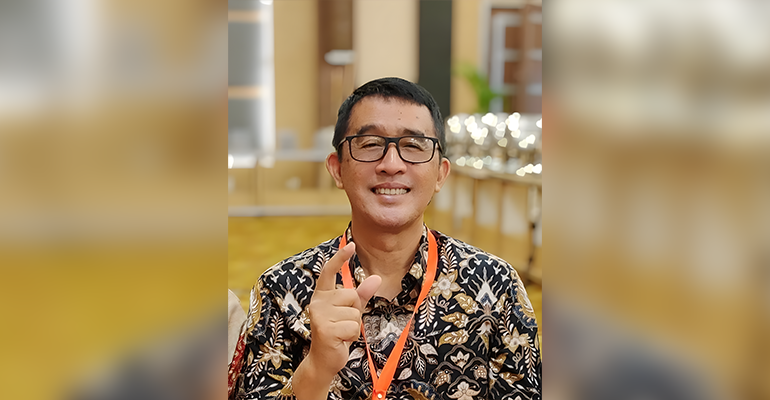Professor of IPB University: Sea Lettuce Has the Potential to Meet the Need for National Fish Feed Raw Materials

Prof Dedi Jusadi, Professor of the Faculty of Fisheries and Marine Sciences (FPIK) said sea lettuce has the potential to be developed as a raw material for national fish feed. According to him, this effort can support in reducing dependence on imported feed raw materials so far.
“The development of water-based raw materials (water-based feed raw materials) such as seaweed can be the most appropriate alternative solution for Indonesia as a maritime country,” opened Prof Dedi during the Pre-Scientific Oration Press Conference for Professors of IPB University, Thursday (24/8).
He said, in addition to using the biomass produced for feed ingredients, seaweed can also function as a bioremediation for the rehabilitation of coastal waters from pollutants, while reducing the effect of greenhouse gases through the absorption of carbon dioxide in the process of photosynthesis.
Sea lettuce with the scientific name Ulva sp is one of the most suitable seaweeds to be developed as an alternative raw material for aquaculture in Indonesia. Prof. Dedi revealed that sea lettuce could be found naturally in Indonesian waters in shallow water areas throughout Indonesia, especially in the coastal areas of Sulawesi, Lombok, Banda, Solor, Sumba, Java and South Lampung.
“The results of our research and those of other researchers show that this seaweed has a protein content that can be engineered through the concentration of water nutrients, so that it can reach 44 percent. The composition of essential amino acids in sea lettuce is relatively similar to soybean meal, which is the main raw material for vegetable protein sources in aquaculture feed,” he explained.
On the other hand, said Prof Dedi, sea lettuce also has a relatively good level of digestibility for various aquaculture organisms such as fish and shrimp. In addition, sea lettuce also has one of the unique polysaccharide compounds such as ulvan and other polysaccharides that can be used as raw materials for bioplastics.
“From the production aspect, sea lettuce has a fast growth rate in the range of 18-55 percent per day, higher than other seaweeds that are commonly cultivated in Indonesia,” he added.
Not only that, sea lettuce also has a high capacity for carbon capture (carbon capture), nitrogen and phosphate, so it has great potential in supporting aquatic environment bioremediation and mitigating the effects of greenhouse gases.
“Thus, sea lettuce or Ulva has the potential to be cultivated in intensive fish or shrimp ponds, both in brackish and seawater, as well as in monoculture or to be cultivated in an integrated multitrophic aquaculture system (IMTA),” he concluded. (rz) (IAAS/MFR)



